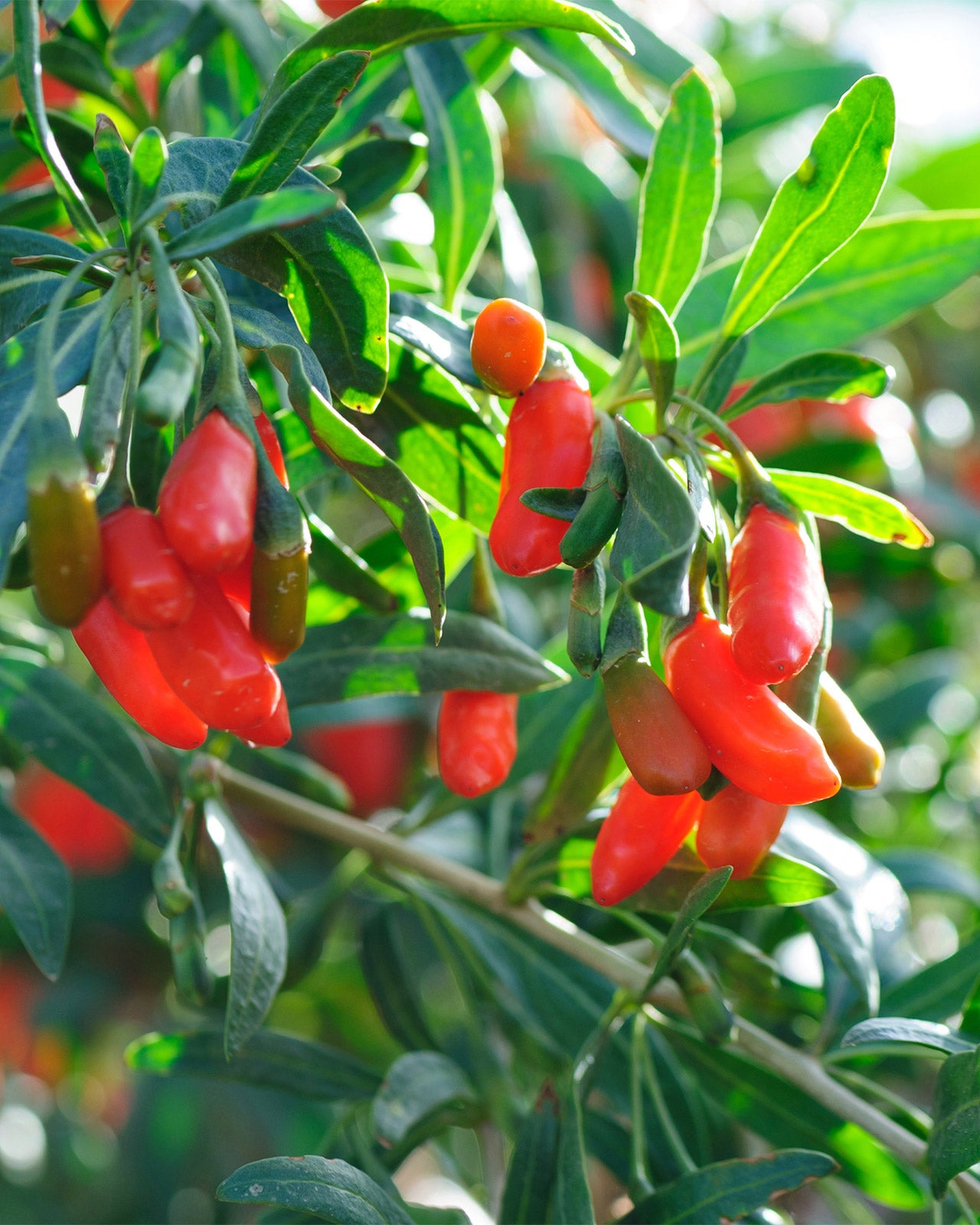
-
Why we like this plant
Fancy growing your own superfoods? The gojiberry brings nutrition and novelty straight to your garden. It’s surprisingly low maintenance, and those juicy red berries are packed with antioxidants — great fresh, dried, or in smoothies. Plus, its lovely purple blooms add a splash of colour in summer.
-
About this plant
The gojiberry, or wolfberry, is a deciduous shrub famed for its nutrient-rich, bright orange-red berries. Native to Asia but well-suited to UK gardens, it bears small, purple star-shaped flowers in summer, followed by clusters of sweet yet tangy berries in autumn. Valued for their high antioxidant content, gojiberries are easy to grow and offer both ornamental beauty and edible rewards.
-
Key features
- Edible superfruit berries
- Summer flowering
- Attractive purple blooms
- Easy to grow
- Can be grown as a hedge or trained
-

Eventual height and
spreadHeight: 150–250cm | Spread: 100–200cm
-

Growth
habitArching and bushy, can be trained along supports or grown freely as a loose, upright shrub
-

Moisture
Moist but well-drained
-

Position in
the GardenGreat in sunny borders, wildlife gardens, or trained on a fence
Planting guide
Plant in spring in a sunny, sheltered spot. Train against a wall or grow as a loose hedge. Water well until established and mulch annually.
Care tips
Prune lightly after fruiting to shape. Remove suckers if spreading is not desired. Feed in spring for better berry production.
Winter care
Fully hardy and requires minimal protection. Prune in winter to maintain shape and encourage productive growth.










